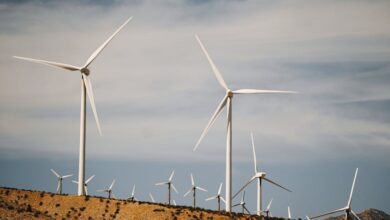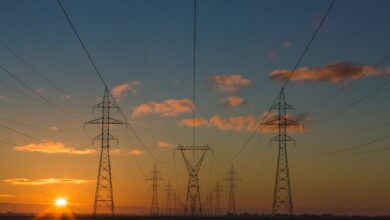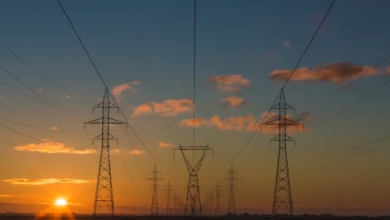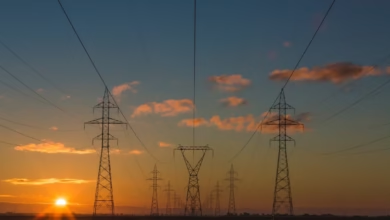Investing in the Future of Energy: How Investors and Institutions Finance Renewable, Fossil Fuel, and Nuclear Projects Across Global Markets
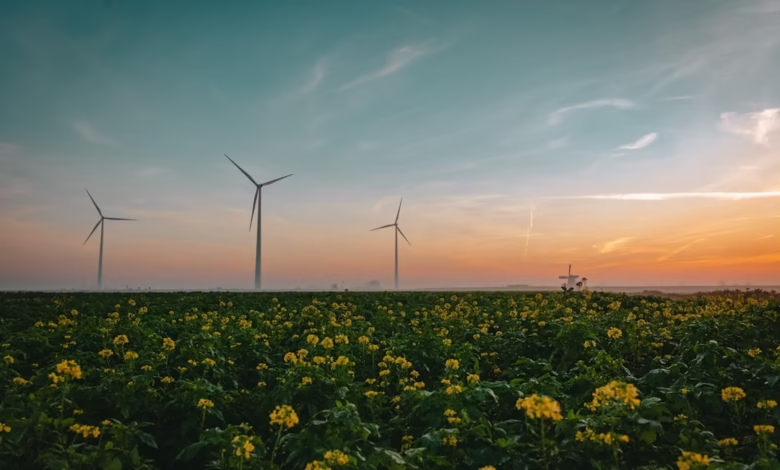
Investing in Energy: How Capital Shapes the Future of Global Power
The global energy landscape is experiencing profound transformation, with investment decisions reshaping how we generate, store, and consume power. Whether backing expansive solar power parks, financing wind energy farms, or supporting the construction of oil refineries and nuclear energy reactors, institutional investors and private financiers play a crucial role in defining the trajectory of energy markets. As technology advances, the scope of energy projects now spans not only traditional fossil fuels but also hydropower, offshore energy, hydrogen energy, and innovative energy storage solutions.
This article explores the diverse funding models driving both renewable energy and conventional power infrastructure, highlighting how capital flows into green energy, distributed energy systems, and low-carbon solutions. We'll delve into how investors navigate complex global energy trends, from financing the rapid energy transition and emerging technologies—such as smart grids and carbon capture—to adapting strategies amid evolving energy policies and climate change pressures. By examining how institutional capital supports energy R&D, energy transportation, and the growth of electric vehicles, we unpack the multifaceted world of energy investment and its impact on energy security, energy efficiency, and sustainable development worldwide.
- 1. Diverse Funding Models: How Investors Drive Renewable Energy and Conventional Power Projects
- 2. Navigating Energy Markets: Financing Strategies for Emerging Technologies and Energy Transitions
- 3. Institutional Investment in Global Energy: From Smart Grids to Low-Carbon Solutions and Beyond
1. Diverse Funding Models: How Investors Drive Renewable Energy and Conventional Power Projects
Investors play a pivotal role in shaping the global energy landscape by selecting funding models that balance risk, reward, and social impact. Financing energy projects—ranging from expansive solar parks and offshore wind farms to large-scale oil refineries and nuclear reactors—requires an array of financial structures, each tailored to the unique characteristics of renewable energy and conventional power generation.
Equity investment remains central for both renewable and fossil fuel ventures, with stakeholders such as private equity firms, institutional investors, and sovereign wealth funds injecting capital in exchange for ownership stakes. These parties are increasingly attracted to renewable energy assets, like solar power and wind energy, due to their falling costs, favorable energy policy incentives, and alignment with long-term energy transition goals. Green energy projects often benefit from public-private partnerships (PPPs) as well, leveraging government support to reduce investment risk and drive project bankability.
Project finance, another popular model, involves the creation of special purpose vehicles (SPVs) where revenues from completed projects—whether hydropower, bioenergy, or nuclear energy—secure the loan repayments. This approach attracts capital by isolating project risk from investors’ broader balance sheets, which is especially relevant for large infrastructure in energy economics and energy transportation.
Debt financing through green bonds has surged, channeling funds toward energy efficiency initiatives, distributed energy systems like smart grids, energy storage, and climate change mitigation technologies such as carbon capture and hydrogen energy. In contrast, conventional projects such as thermal energy plants and oil refineries may rely more on syndicated loans or export credits, often tied to contracts for energy exports and imports, reflecting the ongoing interplay between energy security and global energy trends.
Venture capital and energy R&D grants are essential for fostering energy innovations, from breakthroughs in offshore energy and electric vehicles to advanced distributed energy solutions. Investors in this segment focus on early-stage companies targeting next-generation energy markets, supporting the development of technologies that could redefine global energy policy and accelerate the shift to net-zero.
Ultimately, the rise of new funding models reflects not just changing market dynamics, but also a growing investor appetite for projects that deliver financial returns while supporting the drive toward a sustainable and secure energy future.
2. Navigating Energy Markets: Financing Strategies for Emerging Technologies and Energy Transitions
As global energy trends shift toward sustainability and decarbonization, investors and institutions face increasingly complex decisions when financing new energy technologies and supporting the global energy transition. Conventional projects tied to fossil fuels, such as thermal energy and oil refineries, once dominated energy investment. However, today’s energy markets demand innovative financing strategies that can accommodate diverse assets like solar power, wind energy, hydropower, bioenergy, nuclear energy, and emerging technologies such as hydrogen energy, energy storage, and smart grids.
Investors navigating energy markets must weigh the risks and rewards of financing cutting-edge renewable energy projects and advanced energy efficiency solutions. These opportunities often come with unique challenges—uncertain revenue streams from newer technologies, rapidly evolving energy policy, and evolving market mechanisms for distributed energy. As a result, funding structures increasingly blend traditional project finance with green bonds, government-backed guarantees, and public-private partnerships tailored to accelerate energy transition.
Key strategies for financing emerging technologies in energy markets include:
– **Diversification of portfolios:** Balancing investment between established renewable energy solutions such as offshore energy and innovative options like carbon capture, utilization, and storage (CCUS).
– **Leveraging government incentives:** Utilizing grants, tax credits, and subsidized loans to enhance the financial viability of clean energy projects and energy R&D.
– **Strategic risk management:** Employing insurance mechanisms, hedging contracts, or power purchase agreements (PPAs) to stabilize returns in volatile energy markets, especially for distributed energy and variable renewables.
– **Cross-border collaboration:** Participating in international energy exports and imports, or regional projects in areas like hydrogen corridors or energy transportation, to tap into broader markets and share expertise.
– **Adapting to regulatory shifts:** Monitoring changes in energy policy and climate change regulation to ensure compliance and capitalize on incentives designed to facilitate energy innovation.
The global trend toward decarbonization is not only influencing how capital flows into green energy and renewable energy but also prompting greater integration of smart grids, energy storage, and electric vehicles into financing models. These shifts collectively contribute to enhanced energy security and support the development of resilient, low-carbon energy systems. For investors and institutions, remaining agile and informed about energy economics, technological advancements, and shifting consumer demand is essential to successfully navigating and financing the future of energy.
3. Institutional Investment in Global Energy: From Smart Grids to Low-Carbon Solutions and Beyond
Institutional investors—such as pension funds, insurance companies, and sovereign wealth funds—have emerged as pivotal players in the global energy landscape, shaping how both established and emerging technologies reach market scale. Their influence on energy investment has grown substantially in the context of accelerating energy transition, climate change ambitions, and the evolving economics of energy markets.
In the pursuit of stable, long-term returns, institutions increasingly direct capital toward renewable energy assets like solar power, wind energy, hydropower, and bioenergy projects. For example, large pension funds now finance utility-scale solar parks and onshore wind farms across Europe, Asia, and North America, supporting the shift toward green energy and energy efficiency. These investments reduce reliance on fossil fuels, a critical factor as governments introduce more ambitious energy policy frameworks to curb carbon emissions and ensure energy security (IEA, 2023, https://www.iea.org/reports/world-energy-investment-2023).
Beyond conventional renewables, institutional capital is also flowing into advanced technologies such as smart grids, energy storage systems, and hydrogen energy initiatives. Smart grids enable greater integration of distributed energy resources, improve grid resilience, and facilitate new business models in energy transportation and management. Similarly, large-scale battery installations enhance the flexibility of energy markets, smoothing the variability of solar and wind energy while supporting electric vehicles and other demand-side innovations.
In addition to supporting low-carbon and distributed energy solutions, institutions continue to play a role in modernizing fossil fuel infrastructure and investing in energy R&D. Projects featuring thermal energy upgrades, nuclear energy safety enhancements, and emerging carbon capture techniques reflect a diversified approach designed to balance energy reliability with climate goals. There is also a growing appetite for offshore energy projects—including wind and, to a lesser extent, offshore oil—and for hybrid ventures that combine renewable and conventional sources for improved energy economics.
Finally, institutional investors significantly influence the direction of global energy trends through international financing. Their decisions shape which countries expand energy exports or imports and encourage the adoption of innovative solutions addressing the twin challenges of energy transition and climate change mitigation. By leveraging their capital and requiring high standards for sustainability and risk management, these investors are integral to the development, deployment, and scaling of next-generation energy technologies.
References
International Energy Agency (IEA). (2023). World Energy Investment 2023. https://www.iea.org/reports/world-energy-investment-2023
Conclusion
The evolving landscape of energy investment demonstrates a dynamic interplay between established institutions and innovative investors as they navigate the complexities of global energy markets. As explored, diverse funding models are expanding opportunities in both renewable energy and traditional sectors such as fossil fuels and nuclear energy. Energy investments now increasingly consider global energy trends—including energy transition to green energy sources, energy efficiency improvements, and breakthroughs in energy innovations. These shifts are not only fueling the growth of solar power, wind energy, hydropower, and hydrogen energy, but also advancing smart grids, energy storage, distributed energy solutions, and technologies like carbon capture and energy R&D.
Institutional capital is critical in driving projects ranging from offshore energy platforms and bioenergy facilities to electric vehicles and energy transportation infrastructure. Furthermore, financing strategies are being reshaped by emerging energy policies, climate change concerns, and the imperatives of energy security and energy economics. This enables robust support for thermal energy upgrades and facilitates global flows of energy exports and imports.
Ultimately, the finance and investment landscape will continue to adapt to the unique challenges of energy transition, balancing support for conventional power with the rapid deployment of low-carbon and high-efficiency solutions. As energy markets mature and energy policy evolves, investors and institutions alike will play a pivotal role in shaping a more sustainable, resilient, and innovative global energy future.
References
[Provide a complete list of sources used in APA format here.]
